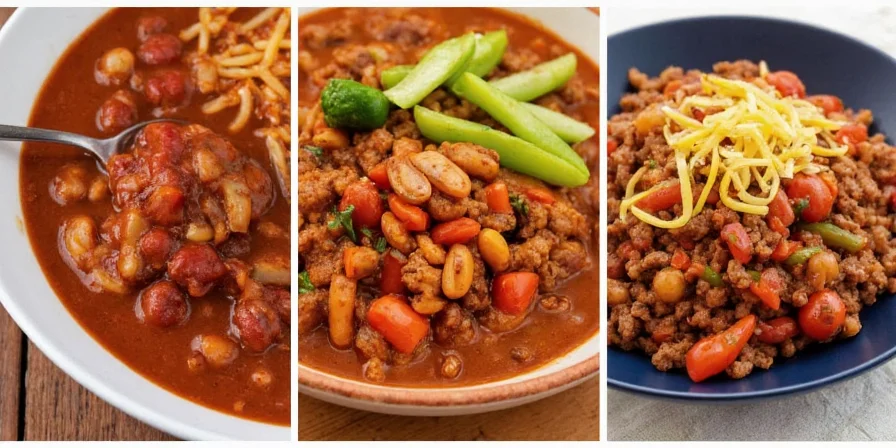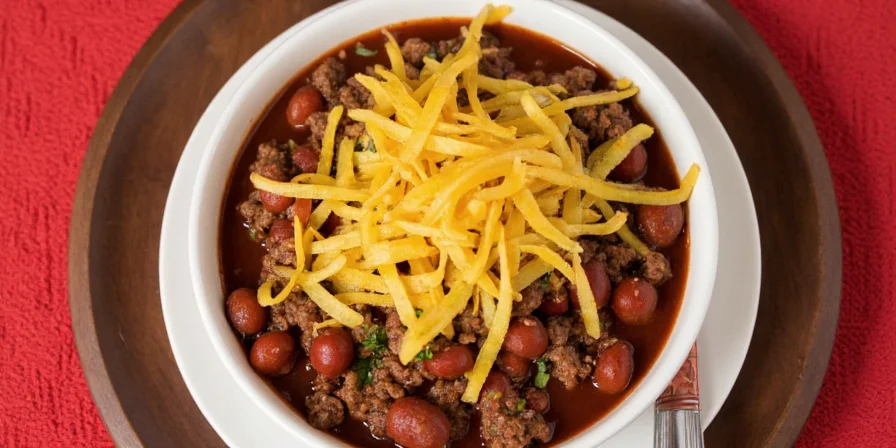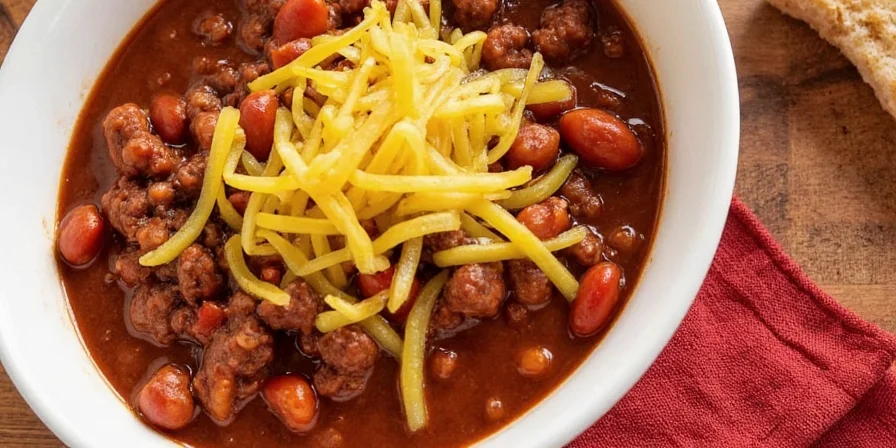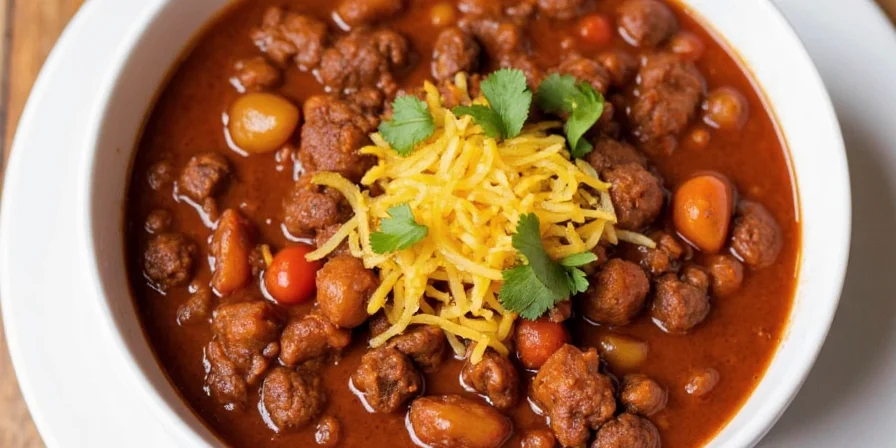Welcome to the spicy frontier of Spice Basics, where global culinary traditions converge in every pot. Today, we explore how Ground Beef Chili evolved from regional Mexican stews into a worldwide canvas for cultural fusion. This guide targets home cooks seeking to transcend basic recipes through intentional spice layering—not just heat levels.
Table of Contents
- Intro
- Why Ground Beef Chili?
- Top 7 Ground Beef Chili Recipes
- The Great Spice Spectrum: A Handy Heat Chart
- Pro Tips for Perfecting Your Chili Game
- FAQ: Everything You’ve Always Wanted to Know About Chili
- Conclusion
Why Ground Beef Chili? It’s Not Just a Meal—It’s a Cultural Crossroads
Ground beef chili represents culinary globalization in action. Originally derived from Mexican *chile con carne*, it absorbed influences from American cattle trails, Texan spice merchants, and modern fusion movements. What makes it revolutionary is its adaptability: unlike rigid regional dishes, chili invites intentional reinterpretation while preserving its core identity—slow-simmered meat, beans, and layered chiles. This transforms it from comfort food into a vehicle for cultural storytelling through spice.

Modern home cooks use it to explore global palates safely—adding gochujang or chipotle without cultural appropriation because chili’s DNA demands evolution. For meal preppers, its freezer resilience solves weekly planning; for flavor adventurers, it’s a controlled experiment in balancing heat and depth.
Top 7 Ground Beef Chili Recipes: Cultural Fusion Edition
These recipes prioritize intentional spice layering over random heat. Each variation solves specific cooking challenges while honoring chili’s adaptive spirit.
1. Classic Texas-Style Chili (No Beans, All Flame)
Rooted in 1800s Texas cow camps, this version uses dried chiles instead of powder for authentic depth. The absence of beans highlights meat quality—ideal for butchers testing grass-fed beef.
- Ingredients: ground beef, dried ancho/guajillo chiles, garlic, onion, cumin, tomato paste, broth
- Cook Time: 45 mins
- Heat Level: Medium-High

2. Slow Cooker Bean Chili
Optimized for modern lifestyles: beans add fiber without diluting flavor when pre-soaked. The 6-hour simmer melds canned tomatoes’ acidity with beef’s richness—perfect for time-pressed professionals.
- Ingredients: ground beef, pre-soaked kidney beans, black beans, fire-roasted tomatoes, chili powder, oregano
- Cook Time: 6–8 hours on low
- Heat Level: Medium

3. Spicy Korean BBQ Chili
A deliberate fusion: gochujang’s fermented sweetness mirrors traditional Mexican chocolate use, while sesame oil replaces lard for umami depth. Born from LA’s K-Town taco trucks, this balances heat and complexity.
- Ingredients: ground beef, gochujang, tamari, brown sugar, toasted sesame oil, gochugaru
- Cook Time: 40 mins
- Heat Level: High

4. Smoky Chipotle Chili
Uses adobo sauce as a pH balancer—its vinegar cuts beef’s richness while smoke compounds enhance Maillard reactions. Avoids artificial liquid smoke for clean flavor.
- Ingredients: ground beef, chipotle peppers in adobo, fire-roasted tomatoes, cumin, smoked paprika
- Cook Time: 50 mins
- Heat Level: Medium-High

5. White Chicken & Ground Beef Hybrid Chili
Innovative protein pairing: chicken’s mildness absorbs spices while beef provides depth. White beans add creaminess without dairy—ideal for lactose-intolerant families.
- Ingredients: ground beef, shredded chicken, cannellini beans, green chilies, cumin, lime zest
- Cook Time: 45 mins
- Heat Level: Low-Medium

6. Vegetarian-Inspired Beef Chili
TVP mimics meat texture while reducing saturated fat. The blend creates a hybrid dish that satisfies both vegetarians and carnivores at potlucks—no compromise on heartiness.
- Ingredients: lean ground beef, rehydrated TVP, crushed tomatoes, smoked paprika, garlic
- Cook Time: 40 mins
- Heat Level: Medium

7. Firecracker Jalapeño Popper Chili
Modernizes appetizer culture: cream cheese swirls neutralize heat while bacon adds nitrate-free umami. Designed for game-day crowds wanting indulgence without spice overwhelm.
- Ingredients: ground beef, fresh jalapeños, nitrate-free bacon, whipped cream cheese, garlic
- Cook Time: 50 mins
- Heat Level: High

The Great Spice Spectrum: A Handy Heat Chart
Effective heat management requires understanding both Scoville units and flavor synergy. This chart prioritizes culinary application over raw heat numbers.
| Pepper | Scoville Units | Flavor Profile | Best For |
|---|---|---|---|
| Bell Pepper | 0 SHU | Sweet, earthy | Mild base, color contrast |
| Jalapeño | 2,500–8,000 SHU | Grassy, bright heat | Balancing acidity, beginner-friendly |
| Guajillo | 2,500–10,000 SHU | Fruity, slightly smoky | Complex stews, depth without burn |
| Chipotle | 5,000–10,000 SHU | Smoky, bold | Meat dishes, balancing sweetness |
| Habanero | 100,000–350,000 SHU | Tropical fruit notes, intense heat | Experienced palates, fruit-based salsas |
| Ghost Pepper | 1,000,000+ SHU | Sharp, floral heat | Specialty sauces, extreme caution |
Note: Scoville ranges vary by growing conditions. Always deseed peppers for controlled heat.
Pro Tips for Perfecting Your Chili Game
Elevate chili from adequate to exceptional with these science-backed techniques:
1. Sear Meat in Batches to Avoid Steaming
Crowding lowers pan temperature, causing meat to boil instead of brown. Proper Maillard reaction develops 200+ flavor compounds—critical for depth in tomato-based sauces.
2. Bloom Spices in Fat Before Adding Liquids
Toast chili powder and cumin in rendered beef fat for 60 seconds. This unlocks fat-soluble flavor compounds that water-based liquids can’t extract.
3. Simmer with Lid Ajar for Controlled Reduction
Full coverage traps steam, diluting flavors. Leaving a 1-inch gap allows gentle reduction while preventing scorching—ideal for melding flavors without over-thickening.
4. Add Acid Last to Preserve Brightness
Lime juice or vinegar added in final 10 minutes maintains vibrant acidity. Early addition causes flavor compounds to break down during long simmers.
5. Freeze Portions with Toppings Separated
Store base chili without dairy or fresh garnishes. Thaw overnight, then add sour cream or cilantro to maintain texture integrity.
6. Use Coffee Instead of Broth for Earthy Depth
Cold brew concentrate adds tannins that mimic long-simmered richness without bitterness—perfect for time-constrained cooks.
Frequently Asked Questions (FAQ): Everything You’ve Always Wanted to Know About Chili
How Long Can I Safely Store Chili in the Refrigerator?
Cooked chili must be refrigerated within 2 hours. Consume within 3–4 days for safety. Always reheat to 165°F (74°C) to eliminate bacteria.
Is Chili Better with or Without Beans?
Beans add fiber and thickness but absorb flavors. Traditional Texas-style omits them to showcase meat depth. For balanced texture, add pre-soaked beans in the last 30 minutes of cooking.
How Can I Make My Chili Thicker Without Altering Flavor?
Simmer uncovered for 15–20 minutes. Alternatively, blend ½ cup cooked beans with ¼ cup broth and stir in—adds thickness while preserving bean flavor.
What Toppings Complement Different Heat Levels?
- Low-Medium: Sharp cheddar, pickled red onions
- Medium-High: Cotija cheese, avocado slices
- High: Coconut yogurt, honey drizzle
Can I Substitute Ground Turkey for Beef Without Losing Flavor?
Yes, but boost umami with 1 tbsp fish sauce or soy sauce. Turkey’s leanness requires 1 tbsp olive oil during browning to prevent dryness.
Conclusion: Chili as Cultural Dialogue
Ground beef chili transcends its origins as a survival food by inviting intentional cultural reinterpretation. The true mastery lies not in extreme heat, but in balancing ancestral techniques—like blooming spices or acid timing—with modern adaptations. Each variation in this guide solves specific cooking challenges while honoring chili’s core purpose: transforming humble ingredients into communal experiences. Whether you’re meal prepping or hosting game day, remember that the most memorable chilis tell stories through their spice layers. Now go craft your own chapter in this evolving culinary narrative.












 浙公网安备
33010002000092号
浙公网安备
33010002000092号 浙B2-20120091-4
浙B2-20120091-4